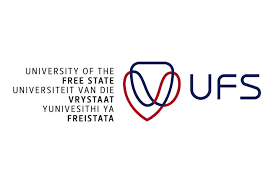University of the Free State: New advance medical imaging technology for the Department of Medical Physics
The Department of Medical Physics in the Faculty of Health Sciences at the University of the Free State (UFS) recently procured a 3D printer which prints 3D phantoms that accurately represent the composition and dimension of certain human organs.
These printed phantoms can be filled with various radionuclides and imaged with positron emission tomography (PET) and single-photon emission computerised tomography (SPECT) systems to mimic specific clinical scenarios. Medical physicists can use these simulated clinical images to develop and evaluate clinical software programmes.
Pilot study
In a pilot study conducted in the department, cardiac, thyroid, and kidney phantoms were printed and digitally segmented from real-life anatomical images, and then printed with a Formlabs 3D Low Force Stereolithography printer. These organ-like phantoms were validated by comparing the acquired images with clinical images. This was done by filling the phantoms with the appropriate radioactivity concentrations and acquiring images with a SPECT/CT gamma camera to produce realistic clinical images. These images are used to evaluate the accuracy of existing commercial and new in-house software programs.
Dr Freek du Plessis, acting Head of the Department of Medical Physics, says printing technology capable of producing three-dimensional (3D) objects has evolved in recent years and provides the potential to develop reproducible and sophisticated physical phantoms. 3D printing technology can assist in rapidly developing relatively low-cost phantoms with appropriate complexities that are useful in imaging or dosimetry measurements.
Medical imaging technology has historically been employed as a non-invasive method for mapping the anatomy and function of the human body and detecting and localising disease. Radionuclides have been used for decades to provide information about organ function and physiology. In the process of using a 3D printer, Dr Du Plessis found that PET and SPECT are two imaging modalities in nuclear medicine that produce functional images of organs in the human body.
The use of a 3D printer for research
This printer assists in evaluating the integrity of PET and SPECT imaging systems and is essential to ensure optimal image quality for clinical studies. Several tests for image quality and dose accuracy can be performed using physical phantoms. Dr Du Plessis stated that “to date, there are several commercial physical phantoms available that can be used to perform these tests. However, these phantoms have limitations, such as cost and the inability to represent certain organs accurately in the human body. The new 3D printing technology that allows users to reproduce clinical organs more accurately can provide a solution to these limitations”.
The validated cardiac phantoms will be used to evaluate the accuracy of the volume and ejection fraction values obtained from commercially available cardiac software programs. The radiation-absorbed dose to certain patient organs is vital when radionuclides are used to treat specific cancers. Therefore, the printed thyroid and kidney phantoms will be used to mimic clinical images. These images can be used to assess the accuracy of organ volume and radioactivity uptake, which is necessary to perform accurate patient dosimetry. These simulated images will be used to assess the accuracy of an in-house dosimetry software program.
Funds to procure the printer were made available through a collaborative internal radiation dosimetry research project between Medical Radiation Physics at the Lund University in Sweden and the Department of Medical Physics, funded by STINT and the NRF.
The research is also done in a joint effort with the Department of Nuclear Medicine. The most important outcome of this research will be that patient diagnoses and treatment will benefit from the availability of these printed phantoms.

